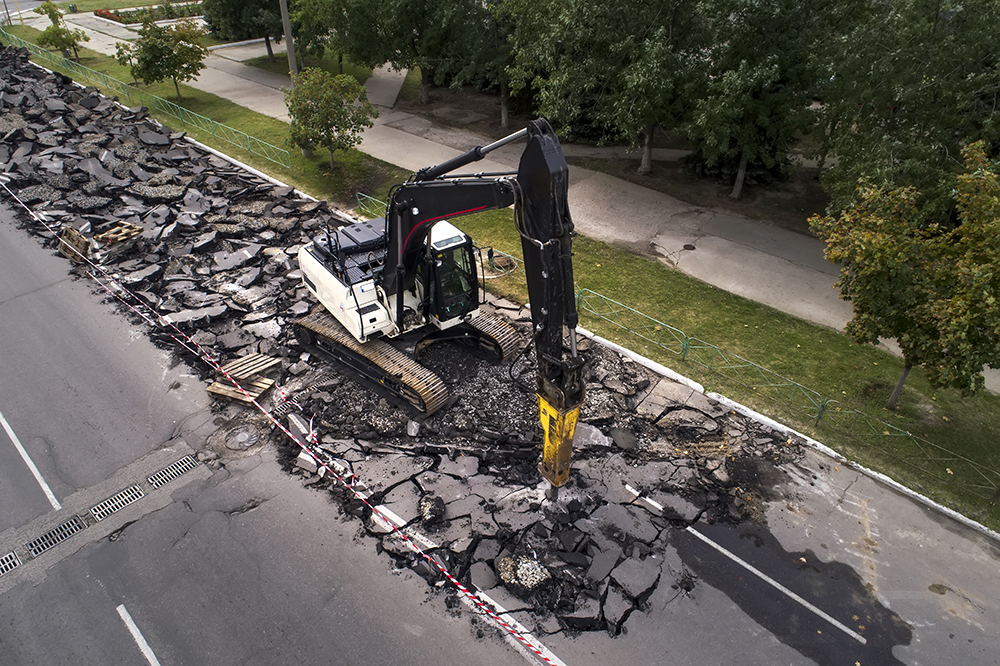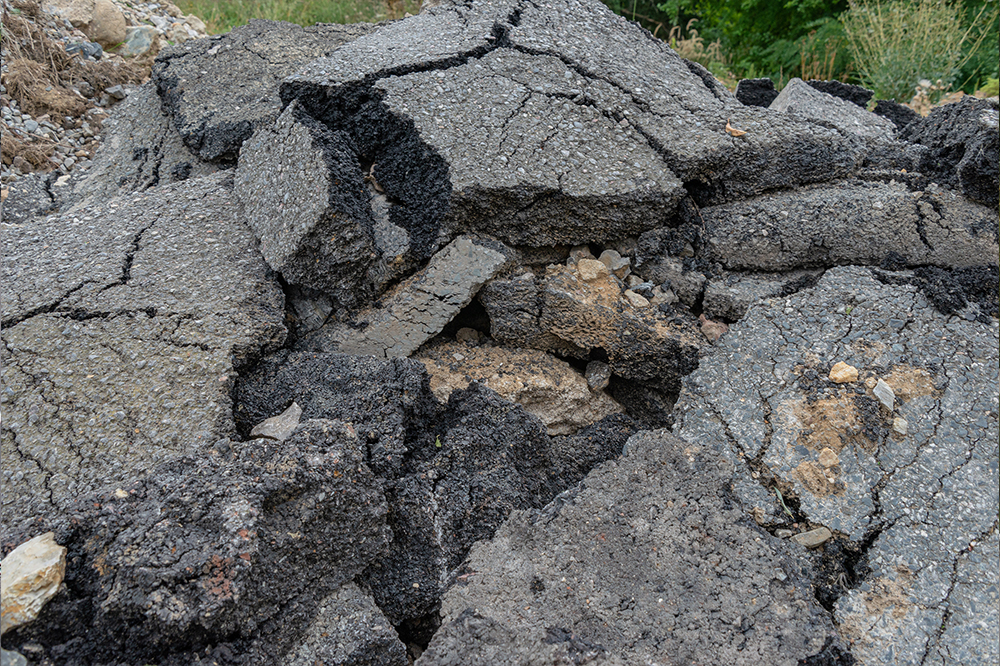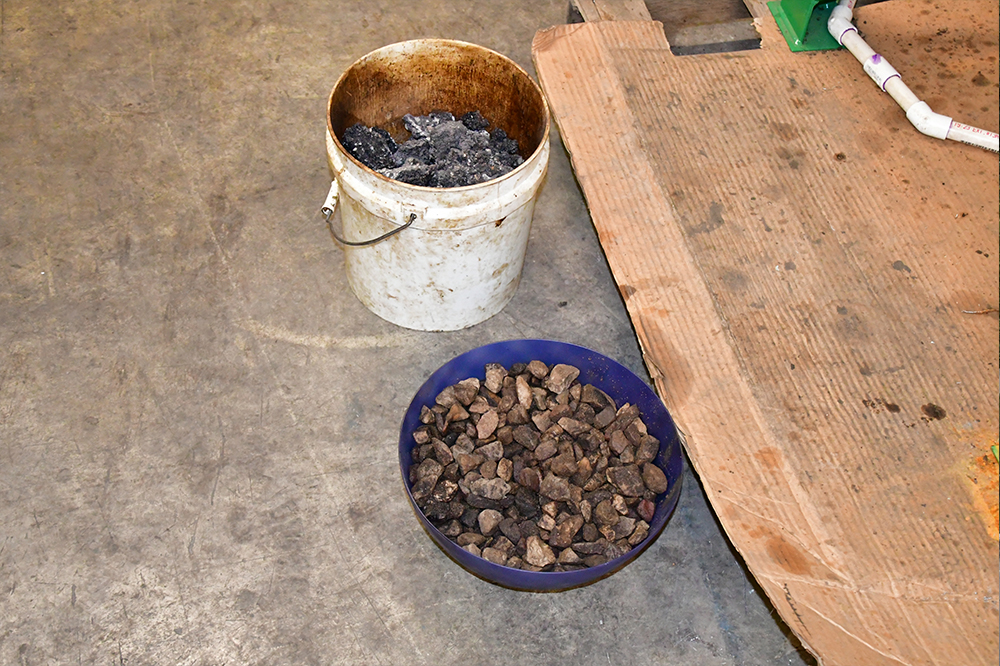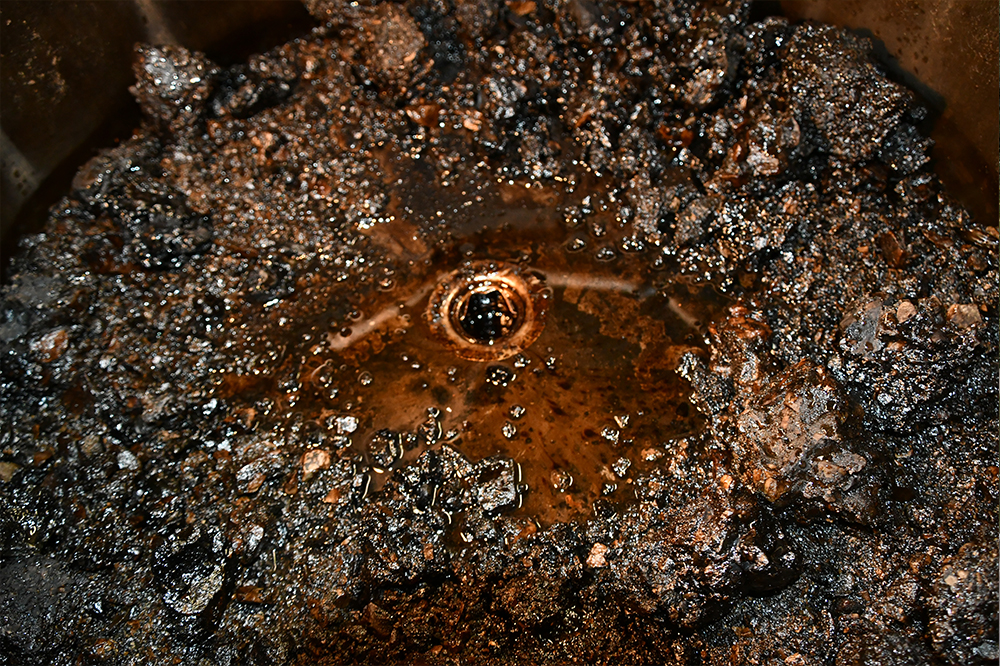Background:
This application is about producing Gold (Black Gold) from waste asphalt on the roads as the name indicates. The project started when we were cutting the blacktop for collecting soil samples for analysis. We took the waste blacktop to the laboratory and treated it with VaporRemed to study bioremediation. In less than 3 days we saw free-floating oil on the surface. This was the start of the development a process for accelerating the production of fuel oil from waste asphalt.


Waste asphalt is not allowed to be disposed of in a landfill and the only known method of recycling is to crush the asphalt and mill it. It is then mixed with virgin asphalt and heated and relaid on the road. However, the roads are not as clean as with virgin asphalt. Some states do not allow even this form of recycling and there are pileups with the city, county or state.
The volume of waste asphalt:
It has been reported that more than 70 million tons of waste asphalt is generated annually in the USA. The waste is partially used as Recycled Asphalt Pavement or RAP and mixed with virgin asphalt in restoring roads and highways. However, still, large volumes of waste remain without any recycling.
In one of the counties in Ireland where re-use of asphalt as RAP is not practiced, 178,000 tons of waste asphalt is piled up as of 2019. The figures are not available for other counties. There is no solution to a clean process for recycling waste.
An Innovative process for recycling waste asphalt:
We offer a sustainable process for recycling waste asphalt. In this process, heat is not used at any stage. It is a combination of bioremediation and a chemical process. The process has been patented in the USA and pending in Canada and Europe. The process is successfully demonstrated in a prototype below.
FOWA 1 (Fuel Oil from Waste Asphalt 1)
The prototype consists of two main components namely a reaction vessel painted green on the right and an Oil-water separator supplied by Freytech Inc., Florida. The black oil-water separator is connected to the reaction vessel through a bottom drain and has two outlets or ports. The oil, free from water is collected from an oil port, and water almost free from any residual oil is released from the water port.
Details of prototype Fuel Oil From Waste Asphalt (FOWA 1):
FOWA Model 1 (Fuel Oil from Waste Asphalt Model 1) is designed for use by operators producing small volumes of waste. The reaction vessel is 24” in diameter and height of 12” with a bottom drain. The drain pipe is connected to an Oil Water Separator through a ball valve. The ball valve controls the flow of oily water to the oil-water separator (OWS). The unit is manually operated though it can be made automatic if needed. The process is given below.
- Add 100 pounds of pulverized asphalt into the reaction vessel
- Spray 50 ml starter solvent (diesel) over the surface
- Immediately spray VaporRemed over the surface of the waste asphalt
- Free oil droplets are formed over the surface
- Add a spray of water from the top of the reaction vessel
- Once the top of the waste is covered shut off the water
- Oil begins to float on the water
- Open the ball valve to release the water to OWS
- Repeat multiple times till all the oil is collected
- The clean gravel is almost white for re-use


Properties of oil:
The oil on analysis is closer to Low Sulfur No. 4 Fuel oil and can be used in many industrial applications without further refining.
The output of oil is 1:1 or equal to the weight of the waste feed. 10 pounds of waste asphalt produces 10 pounds of oil or slightly more than 1 gallon of fuel oil. One ton would produce one ton and if the total waste generated in the USA is used as feed, it would produce 70 million tons of fuel annually. The following two videos show the process as explained by the engineer.

